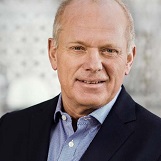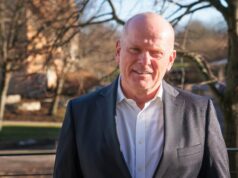
Sanionas vd: “Finansieringen tar SAN711 vidare mot Proof of Concept”
Saniona presenterade nyligen två nya kliniska utvecklingskandidater och utökade sin portfölj inom jonkanalsmodulering för epilepsi och andra neurologiska sjukdomar. Därutöver driver bolaget ytterligare fyra kliniska program som skapar samarbetsmöjligheter. För att fortsätta utvecklingen och möjliggöra strategiska partnerskap genomför Saniona en företrädesemission om 140 Mkr. BioStock pratade med Sanionas vd Thomas Feldthus för att få veta mer.
Saniona har inlett 2024 på ett aktivt sätt genom att tillkännage SAN2465 som klinisk kandidat för svårt depression. Detta skedde endast en vecka efter att bolaget meddelade att degår vidare med SAN2355 från sitt Kv7-epilepsiprogram. Det innebär att Sanionas epilepsipipeline nu består av tre projekt, med fas II-redo SAN711 i spetsen.
Förutom SAN2465 har Saniona också två kliniska program inom andra indikationer än epilepsi som är redo för partnerskap. Tesomet är redo för fas IIb i sällsynta ätstörningar, medan SAN903 är redo för fas I vid inflammatorisk tarmsjukdom. Tesofensine är det projekt som kommit längst, och här närmar sig Saniona regulatoriskt godkännande för behandling av fetma i Mexiko, genom partnern Medix.
Nyemission ska ta utvecklingen vidare
Saniona genomför just nu en nyemission av units om cirka 140 Mkr för att driva vidare utvecklingen i projekten och föra bolaget närmare strategiska partnerskap. Kapitalanskaffningen, som löper från och med den 22 januari till och med den 5 februari, omfattas av teckningsförbindelser och garantiåtaganden om 84 MSEK, motsvarande cirka 60 procent av företrädesemissionen.
Vd kommentar
BioStock kontaktade vd Thomas Feldthus för att få veta mer om de kommande milstolparna under 2024 och hur likviden från företrädesemissionen kommer att användas.
Thomas, in your opinion, could SAN711 potentially disrupt the epilepsy treatment landscape and what distinguishes it from competitors?
– Absence epilepsy is manifested by patients losing attention and stopping all activity. Patients can have up to 200 attacks per day, which has significant impact on their school, work, and social life.
– Many broad spectrum antiseizure medications have no effect on this type of epilepsy. Others such as benzodiazepines are effective, but not used because of dire side effects.
– First line therapy comprises two old drugs, ethosuximide and valproate, which were launched in the early 1960’s. Both products have high failure rate to control absence seizures and a negative impact on cognitive functioning, which is highly inappropriate as the patients have problems with this already. About 20% of patients are not treated adequately with existing therapies.
– There is basically no competition. There is only one broad spectrum program in clinical development. Thus, there has been no innovation for the last 60 years despite that there is a significant need for novel antiseizure medications for effective treatment of absence seizures without affecting cognition.
– SAN711 is a novel approach for the effective treatment of absence epilepsy without affecting cognitive function. We have demonstrated that it is effective in genetic animal models of absence seizures and that it has a very benign safety profile in a phase 1 clinical study.
– We plan to start with patients with childhood absence seizures who are considered resistant to existing therapies. Following that we expect to broaden it to first line therapy and other types of absence epilepsies such as juvenile absence seizures.

With the recent positive data on SAN711 and the initiation of candidate selection in your Kv7 programme, could you provide insights into the commercial interest you have seen so far?
– We see significant interest in both assets. Both compounds are unique as they are highly selective towards the target of interest. We don’t think that any other companies have been able to produce compounds with similar profiles.
– We are speaking with several companies about these assets both for epilepsy and other indications. We are focusing on epilepsy. However, from a partnering perspective we are more flexible.
– The discussed deal structures include world-wide licenses as well as regional licenses where there is a geographical split of commercial rights between the parties. Obviously, the latter is easier if the other party is interested in developing the compounds for epilepsy.
Could you provide a brief overview of your track record in establishing partnerships thus far and what you are looking for in new partnerships?
– We have over the last decade established a long track record of strategic collaborations and spinouts.
– We’ve formed alliances with top-tier companies like Boehringer Ingelheim, Pfizer, and Janssen, as well as engaged with midsize and innovative firms such as Medix, AstronauTx, and Proximagen. We have made three spinouts including Initiator Pharma and Scandion Oncology, both listed on First North Stockholm, while Cadent Therapeutics was acquired by Novartis. These activities have generated over 400 MSEK in income, and we retain the potential for future milestones, royalties, and earnouts from several of these collaborations.
You are now raising funds through the rights issue. How important is this financial infusion in furthering strategic partnerships?
– Saniona has a stronger pipeline than ever before. This financing will enable us to create value by progressing selected pipeline programmes with the aim of supporting our business development activities and bringing one programme to proof of concept.
– We will use the proceeds to bring SAN711 forward to proof of concept in absence seizures and take one or several of the new candidates forward in preclinical development including SAN2355. In addition, we are also considering taking SAN2219 and SAN2465 into the first part of the pre-clinical development.
– We will carefully evaluate our options when we have closed this financing and then adjust the allocation when we have made our next collaboration agreement.
What specific goals or objectives will be addressed by the funds?
– This financing will be used to bring SAN711 towards proof of concept in absence seizures and mature several programmes for partnerships thereby securing funding without depending on the financial markets
Considering the potential exercise of warrants of series TO 4 in April 2025, how do you plan to utilise these additional proceeds?
– The shareholders will obtain a rebate of 30 per cent on the price of Saniona’s stock at the time of exercise of the warrant in April 2025. An approval of tesofensine in Mexico or a new collaboration may have a significant impact on value of the TO 4 for investors as well as on the proceeds to Saniona. We have still some debts to Formue Nord, and up to 50 per cent of the proceeds from TO 4 will be used to resolve that if it has not been paid back before April 2025. The balance will be used to progress our pipeline.
Finally, what key milestones do you hope to achieve during 2024?
– Income through new collaborations and approval/launch of tesofensine in Mexico which may facilitate progress and on other pipeline programmes including SAN711, SAN2255, and SAN2219 for epilepsy, SAN903 for inflammatory bowel disease, SAN2465 for major depressive disorder, tesofensine in other territories, and Tesomet for rare eating disorders either through the new partnerships or internally without being dependent on the financial markets.
Innehållet i BioStocks nyheter och analyser är oberoende men BioStocks verksamhet är i viss mån finansierad av bolag i branschen. Detta inlägg avser ett bolag som BioStock erhållit finansiering från.

